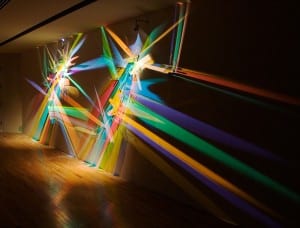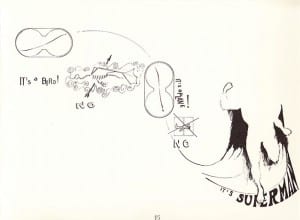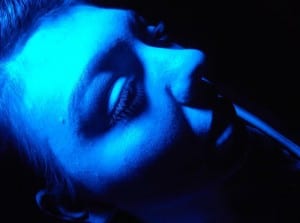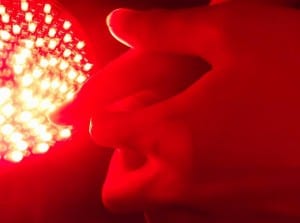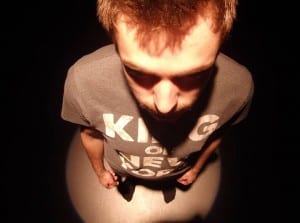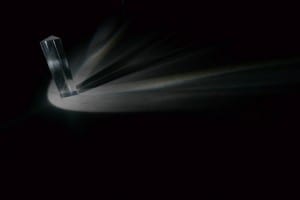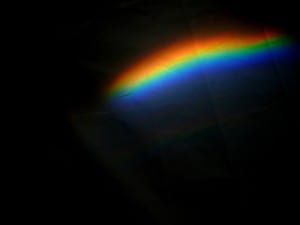Framing Statement
Our piece Dispersion was performed at Lincoln Performing Arts Centre on Saturday 10th May, 2pm to 6pm. The word Dispersion was chosen as a name for our performance as it is a word that incorporates both sound and light elements, and also reflects how our piece is dispersed around the shop/studio. Site specific is a type of performance that is not in a conventional theatre. ‘The term (site specific) refers to staging and performance conceived on the basis of the place in the real world’ (Newman, 2012, 50). Performance itself encompasses not traditional acting but instead, performance art, installations etc. It ‘places the audience at an entirely different relationship to the text, the place and the purpose for being there’ (Pearson, 2010, 7). Site specific performance is also not in the traditional place you would expect to see a piece of theatre so that is why it can be unusual for audience members.
At first we found out we would be performing in a shop as part of the Gravity Fields Festival in Grantham in September 2014. So we had to tailor our piece to the work of Isaac Newton and science. As the festival is about the work of Newton, we researched into many different ideas to do with him and found we were most compelled with his theory of light and sound. As part of the brief we were given for the festival, it also was said that we could chose from different topics, and we chose to go with light and sound because there is so much you can experiment with and learn from. Originally from the outset we wanted it to be very visually stunning and interactive for families and children.
We chose to keep the set very simplistic and minimalist as ‘the minimalist object emphasises a transitive definition of site’ (Kaye, 2000, 2). We then found out later in the course that we would also be performing our main assessment in Studio 2 in the Lincoln Performing Arts Centre. Personally, this worked better for us because of sound and lighting equipment available at hand. We took a journey through many different styles of site specific performance to get to our final piece which stripped back Newton’s theory of light and sound. It was also our choice to black box it to block out any outside light to make the colours even stronger.
Analysis of process
‘Retail Therapy’ was our initial title. This immediately provoked ideas about the thought process of a person whilst shopping. What stuck out for me was how shopping supposedly increases peoples moods, bringing a sense of self-satisfaction. But, does one merely shop for satisfaction? Or do the corporate companies of the world perpetuate a greed driven society in which the capitalist system is constantly driving forward the ideas of wanting more.
As part of our initial research, we went into the town and visited shops. This was very different from any other normal shopping experience, as we were coming in as an outside eye, observing the behaviours of shoppers. An interesting thing evident was how isolated a shopping department store. ‘The city is too complex an organism for us ever to fully know it, consisting as it does endlessly intersecting narratives’ (Pearson, 2010, 98). Much like the stories and the lives of the everyday customers in the shop.
The most poignant part of the process was being told we were performing in the Gravity Fields Festival in Grantham. Immediately, ideas of science were conjured up, how the use of lights and optics could be used in performance. Perhaps the potentiality of using mirrors. When one goes shopping, there are mirrors everywhere, leading us to become aware of our reflection as we decide whether or not we want that item or not. When researching for inspiration I came across this performance; http://www.youtube.com/watch?v=WzUv4EedXWU (Margineanu, 2012). What stands out is how the audience on the outside are looking into a supposed different world, snippets of different scenarios and the passers by are mere spectators, but what if roles were swopped? Instead, we are watching the outside world in their daily pursuits in life.
To further our knowledge in Site Specific, we looked at other pieces of work which were both challenging and inspiring. We needed to be exposed to different kinds of performance we have never come across before, some shocking and thought-provoking in order to make us think about how we could work with audiences. The performance that was the most engaging was LIGNA’s Radio Ballet, performed in 2008 (Sofaer, 2010). What was really striking was that the audience were just members of the public, each with headphones, performing actions in the middle of the city. From this, we had the idea of giving our audience headphones, to guide them round the shopping centre and the shop. After feedback we were discouraged to use this idea because the experience of the performance would be too intimate and isolated and ‘our thoughts are not limited by what we can learn through the sense’ (Cimini, 2012, 357).
Punchdrunk were another group that were highly influential in our process. After reading into their work and their manifesto, it encapsulated the point of our performance; ‘Audiences are invited to rediscover the childlike excitement and anticipation of exploring the unknown and experience a real sense of adventure’ (Punchdrunk, 2014). Through the use of colours and sounds in our performance, this is how we aimed to make it accessible and visually exciting for families, especially children.
This then lead us to further discover what was meant by space, boundaries and thresholds. It got me thinking of what we actually mean by the term space. One would never truly think about the different spaces identified in life, for example-dream space, the sub conscious space of our dreams; ‘the phenomenology of the daydream can untangle the complex of memory and imagination’ (Bachelard, 1958, 26). But, the space that stood out for me was a transient space, whether that is a hotel, airports, train stations or even a shop. People are constantly passing in and out throughout time, with no one staying, making their mark on history and leaving the memories behind them as they pass through it.
As the disused shop was our performance space, we needed to work out how the audience would move around and explore the space as ‘emptiness is an illusionary category and performance may have to work hard to assert itself’ (Pearson, 2010, 156). It reminded me of the time lapse videos of people walking and going through the motions of day to day life. What if we actually stopped and truly appreciated the space we are in? Furthermore, as a group we explored that ‘there is inside and outside, with thresholds to be crossed and contracts to be made’ (Pearson, 2010, 158). The entrance to the shop brought us a new meaning as entering a threshold into a potentially new world.
Visiting the site brought us new clarity to the piece as we could envisage our ideas in the space. Different ideas that we have been working on over the past weeks were finally being put into practice. The shop we chose was full of mirrors, and was originally ideal for the type of performance art we wanted to create, linking in with the science of reflection. A particular thing that stood out for us as a group in the shop was the use of the windows. In our final performance, we want the windows to be blacked out to ensure no light escapes from the space. Therefore, it was even more important for us to connect with audience members as they will not be able to see inside. In order for this to happen we have to make it eye-catching and appealing for passers-by, to truly ‘enhance relationship between performers and audience’ (Allain and Harvey, 2006, 148).
But what about the passers-by themselves? They are looking into this shop window, wondering about what they might purchase or what is aesthetically pleasing. ‘The ordinary practitioners of the city…they walk-an elementary form of experience of the city; they are walkers’ (Hopkins et al, 2009, 59). Normal shoppers on a day to day basis pass throughout the city, through the monotony of life and yet are participants in a performance which they are completely unaware of; of merely walking. As knowing performers in the window we have to try and create a new performance with our audience.
For the final section of our performance we wanted to look at how Newton’s theory of the prism reflecting and refracting light can be used in performance. It is fascinating the different colours it makes and this would be very visual for the audience, especially children. Whilst researching I came across an artist called Stephen Knapp who produces light paintings. The way in which it looks so magnificent but yet is only made out different pieces of glass with light shining in different angles to make the colours bend through is inspirational and captivating. It creates a sense of discovery and feeling of awe for the audience as it looks so visually stunning but they learn the science behind the light at the same time.
(Knapp, S., 2005)
In our performance we wanted to take the audience on a journey. This journey is going to be personal and differ for each audience member. Initially, it may be slightly unsettling for the audience as a shop is quite an unlikely place to see a performance and there is ‘no existing conventional performer-audience structure to contend with’ (Newman, 2012, 55). Therefore, it was even more important to grab the audience’s attention and make it eye-catching for families.
For one of the parts of the piece, the intended aim was to use a microphone and through this project sound waves onto the wall, to show the audience how sound waves are produced through noise. After research into patterns between chords and colours, we found that minimalist music uses patterns to create its style of work so this is why we chose to originally use this in our piece. Another reason why it was chosen was that the beat was constant, with only subtle changes and phase shifting; similar to the beam of light which is constant. http://www.youtube.com/watch?v=RNnGVqW0pvA (Hughes, 2011). This piece of music was originally used in our physical theatre performance as we portrayed through our bodies how light moves and reacts which different light beams. After feedback-it needed tightening up and sharper movements which were worked on.
The most engaging part of site specific performance personally is the idea of the pre-performance, performance and post-performance and how the audience is used. Audience involvement is a really key thing we as we want strong engagement in every element of our performance. Therefore ‘a distinction is drawn between watchers and the watched’ (Pearson, 2010, 157). One part of our performance we were exploring was experimenting with the use of different sounds and rhythms to create for the audience. Through using different utensils and everyday objects, to using our voices we were exploring different ways in which sound travels and a particular focus on listening to the sounds around us. A specific influence was Cathy Berberian’s Stripsody.
(Berberian, C., 1966).
This snippet of the piece shows how the traditional notation on the stave is replaced with different onomatopoeic sounds which create a story for the audience. A splash of humour is also brought to the performance through the different sounds made through the voice and this really struck a chord with us, especially for audiences with children in. Philosopher Maurice Merleau- Ponty would argue that ‘there are limits to what sound can do in terms of expressing audibility’ (Cimini, 2012, 360). This was why we chose to be overly expressive and visual so the audience were not just focusing on the sound.
After feedback from our performance- in- progress presentation, we were told to really strip our concept back and bring it back to basics as ‘minimalism’s site-specificity can…reveal itself in performance’ (Kaye, 2000, 3). So it was decided as a group that we would still focus on light and sound but experiment with it in a simplistic way rather than show this through live music and physical theatre. We experimented with playing with light and how light works on the body; creating different shadows.
(French, N., 2014).
This is one of our group members and we were interested in how we could manipulate the light to make it create different shadows on the face. We experimented with different parts of the body to see how the light reacts to the contours, in particular eyes and faces as this was where you could get the more intricate detail.
(French, N., 2014).
This light here reacts to sound. If someone was to clap and make noise it would change colour accordingly. We experimented with this and used clapping, stamping, our voices and a piano and this was incorporated into our final performance. It would also encourage audience interaction and participation as they could clap and it would change colour.
(French, N., 2014).
We then began to experiment with direct spotlights onto people and how this would change the direction of shadows. A possible idea suggested was to have text being read out under a spotlight. It would be particularly striking because ‘non-auditorium performance environment can directly engage the audience in a sensory experience’ (Newman, 2012, 50). It can captivate an audience as they are truly listening to what is being said.
Another main point of feedback was to experiment with the use of prisms and the different reflections and colours they create. Having ordered a prism we began to experiment in rehearsal with how a prism reflects the light to produce a spectrum of colours and how this can be used in performance. We experimented with shining a white torch and a white laser through the prism and found that surprisingly the torch worked better as maybe the laser wasn’t strong enough. ‘Sight and movement are ways of moving into relationships with objects’ (Cimini, 2012, 361). We then continued to experiment and found an OHP projector to create the best spectrum from the prism so this is what we used in our final performance. (Shown the spectrum below).
(French, N., 2014).
(French, N., 2014).
By this point, we were informed that our final performance was in Studio 2 in the Lincoln Performing Arts Centre. We felt this would equally work as well as it has an extensive collection of lights and sound equipment available to use. From this we found that ‘to move the site-specific work is to re-place it, to make it something else’ (Kaye, 2000, 2). Although, it is not the original site we were working in, the science festival is our site and not the building itself which important to keep in mind. It was from the final few weeks in our process that we came up with the name for our piece- ‘Dispersion’. This word encapsulates both light and sound and it shows how our performance is dispersed into different sections. We also set up a twitter page @DispersionLPAC (Dispersion, 2014) to keep audience members up to date with all our findings during the rehearsal process. It was important to keep our audience engaged with the process as it informed them when they came to see the final performance from where the ideas came from. This also meant we went back to our original idea of having different experimentation stations around the room. As Pearson mentions inSite-Specific Performance: in ‘each section, there must then be agreement, concerning its nature, purpose and emotional tenor’ (Pearson, 2010, 161).
Performance Evaluation
The main thing learnt from the final performance was that we underestimated how physically and mentally draining it would be to concentrate and perform for four hours with a half hour break. It was really challenging but also a sense of achievement when finished as all the tasks were completed. After feedback from the audience, it was evident that the most striking part of the performance was the minimalist set and the surprise of seeing the sound waves projected behind the curtain. ‘The path which the audience takes through the performance then serves…to re-invent the space’ (Newman, 2012, 52). As the piece was a performance installation piece, there was no opportunity for the audience to get involved, but again after feedback we found this was a good thing for that particular space and it was more visually engaging because of the focus that remained throughout.
One thing that could have been improved for the final performance was the use of the OHP and the prism. The OHP was used because it showed the prism the most clearly but as we rotated every half an hour, the scanning of the body with the spectrum doesn’t change and this could get quite repetitive and potentially disengaging for the audience. This is why next time we could try and get the audience involved, maybe through giving them the prism to work out how the light is refracted, constantly educating the audience members through performance.
As we are lucky enough to perform our piece again in September at the Gravity Fields Festival in Grantham, it is now our challenge to shape our piece ready for the shop, making it more engaging for the amount of audience members that are going to be present because of the festival. As we were quite unfamiliar with our text due to the fact it was a recent decision to read the text; there were still words we could not pronounce. Therefore, next time we perform it in the Gravity Field’s festival we will be familiar and comfortable with all the words in the text, perhaps even experimenting with different tones or pace whilst saying the text. Philosopher Gaston Bachelard, states in Poetics of Space that ‘the poetic image places us at the origin of the speaking being’ (Bachelard, 1958, xxiii). As the piece was quite individual in the sense that people could come and go on their own free will and everyone will take some different from the performance, it shows how ‘site-specific performance…provides the audience with an awareness of their individual presence’ (Newman, 2012, 54). This is why when we perform it again we would slow down the transitions between moving stations because more emphasis is made on the presence of the performer and the audience member.
The story of our process shows how the ideas have progressed and evolved, been changed and yet as a group, the final performance produced was visually capturing and fully expressed what we wanted to show to the audience- us experimenting with light and sound. It will be interesting and exciting to see the performance reshaped for the Gravity Fields Festival in September.
Bibliography
Allain, P., Harvie, J. (2006) The Routledge Companion to Theatre and Performance. New York: Routledge.
Bachelard, G. (1958) The poetics of space. Boston: Beacon Press.
Cimini, A. (2012) Vibrating colors and silent bodies. Music, sound and silence in Maurice-Merleau-Ponty’s critique of Dualism. Contemporary Music Review. 31, (5/6) 353-370.
Dispersion (2014) Homepage [twitter] Available from https://twitter.com/DispersionLPAC [Accessed 15th May 2014].
French, N., 2014, Dispersion pictures. Lincoln: Lincoln Performing Arts Centre.
Hopkins, D. J., Orr, S and Solga, K. (2009) Performance and the City, Basingstoke: Palgrave Macmillan.
Hughes, N. (2011) Theme 1- Electronic Minimalism [online]. Available from: http://www.youtube.com/watch?v=RNnGVqW0pvA (Accessed 16th March).
Kaye, N. (2000) Site-specific art-performance, place and documentation. New York: Routledge.
Knapp, S. (2005) Museum Exhibitions [online] USA. Available from: http://www.lightpaintings.com/museum.html (Accessed 13th March 2014).
Margineanu, A. (2012) The Window [online] New York: http://www.youtube.com/watch?v=WzUv4EedXWU(Accessed 2nd February 2014).
Newman. J. (2012) The phenomenology of non-theatre sites on audience. Theatre Notebook, 66, (1) 48-60.
Pearson, M. (2010) Site-specific performance. Basingstoke: Palgrave Macmillan.
Phillips, T., (2013). Graphic music scores-in pictures [online] London: Guardian. Available from: http://www.theguardian.com/music/gallery/2013/oct/04/graphic-music-scores-in-pictures (Accessed 15th May 2014).
Punchdrunk (2014) Company[online] London. Available from: http://punchdrunk.com/company/article/about [Accessed 12th February 2014].
Sofaer, J. (2010) The Many Headed Monster- the audience of contemporary performance [online] London. Available from: http://www.joshuasofaer.com/2011/07/the-many-headed-monster/ [Accessed 12th February 2014).
